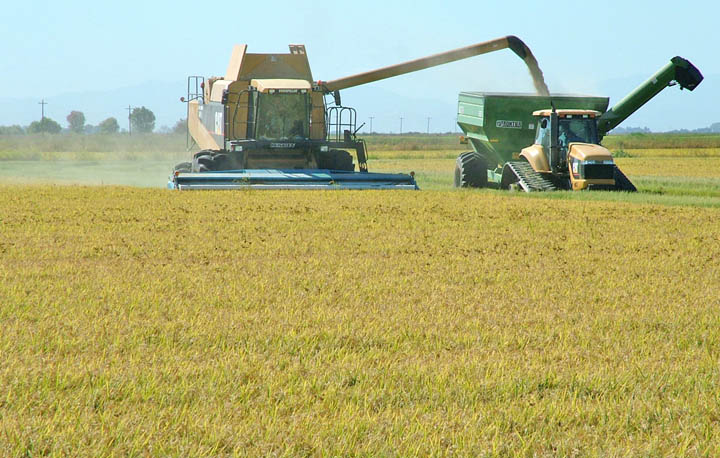
U.S. rice industry ramping up efficiency, sustainability
A new research report examines rice production's impact since 1987 in five key areas, including land use, soil loss, water and energy use, and climate impact.The study, U.S. Rice Resource Efficiency and Sustainability Metrics, shows that rice production has become increasingly efficient on a national level over a 20-year period, resulting in a 21 percent decrease in land required to produce 100 pounds of rice; a 43 percent decrease in soil loss; a 33 percent reduction in water use; a 52 percent reduction in energy use; and a 29 percent reduction in soil methane per 100 pounds of rice over a 20-year period.
December 13, 2010

Panelists participating in a sustainability session at the 2010 USA Rice Outlook Conference presented new research findings on rice industry sustainability, detailed the driving factors of the global sustainability effort, and outlined how the trend will continue to drive business practices.
Rice producer Jennifer James, chairman of USA Rice Federation's Sustainability Task Force, presented findings from a new research report that examines rice production's impact since 1987 in five key areas, including land use, soil loss, water and energy use, and climate impact. The study, U.S. Rice Resource Efficiency and Sustainability Metrics, shows that rice production has become increasingly efficient on a national level over a 20-year period, resulting in a 21 percent decrease in land required to produce 100 pounds of rice; a 43 percent decrease in soil loss; a 33 percent reduction in water use; a 52 percent reduction in energy use; and a 29 percent reduction in soil methane per 100 pounds of rice over a 20-year period.
"The results show that rice farmers are producing more with fewer resources," James said.
Dr. Marty Matlock, area director for the Center for Agricultural and Rural Sustainability at the University of Arkansas, said the driving force behind the global sustainability movement is the world's growing population and dwindling natural resources. "The world needs to achieve a 50 percent increase in food production by 2050," he said. Matlock added that the achievements of the next 10 years in research, improved genetics, production management practices and technology, will shape the future of agriculture for the next 100 years. "If you're only reacting to this change, you're going to go out of business."
Diane Holdorf, senior director, environmental stewardship at the Kellogg Co., said the company is committed to sourcing sustainably grown products and in 2005, set a 10-year goal of reducing its energy use, greenhouse gas emissions, water use, and waste per metric ton of food produced by 10 percent to 20 percent.
Holdorf announced that Kellogg's is working with the Louisiana State University's Master Farmer Program and Louisiana rice millers to develop an education program to raise awareness about sustainably grown rice.
You May Also Like



